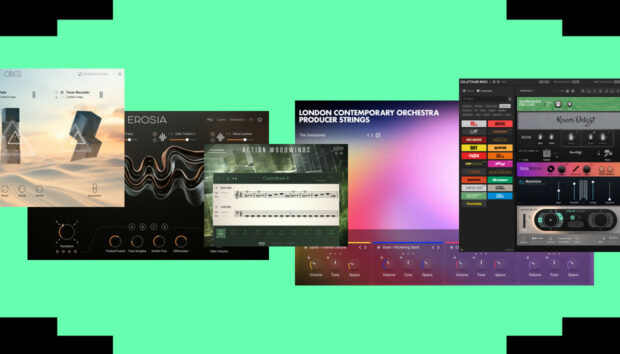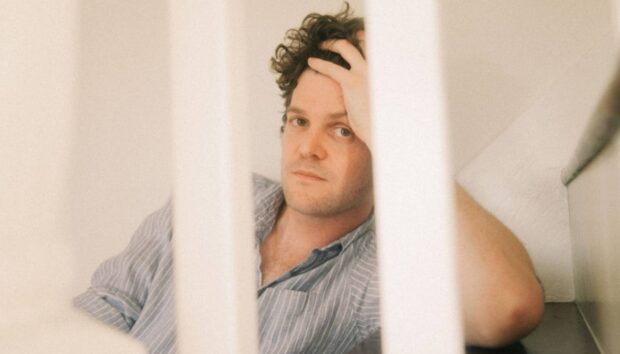
If someone asked you to sing them a song, you’d probably sing them the chorus. The chorus is, after all, the beating heart of any song. It is often the most memorable part of a track that carries the listener through and keeps them hooked while listening.
A catchy melody and powerful lyrics in a chorus can make or break a track. But the compositional principles behind a great chorus remain the same if you’re a songwriter, beatmaker, or producer in almost any genre.
In this article we’ll dive into the essential elements of how to write a chorus, from understanding its purpose to creating a melody that gets stuck in your head.
Jump to these sections:
- Understanding the chorus: purpose and structure
- Writing memorable chorus words
- Crafting a catchy melody: tips and techniques
- Putting it all together: from idea to finished chorus
- Get started writing catchy choruses
Follow along with this tutorial using Komplete Start.
Understanding the chorus: purpose and structure
In popular music, a chorus serves as a song’s centerpiece. It’s the part that holds the main message, often with a stronger emotional impact than the verses. The verses might build up the story or lay the groundwork, but the chorus is where everything comes together in a concise moment.
The chorus often repeats throughout the song, and it anchors the listener with familiarity. The structure of a chorus usually contrasts with the verses and gives the track a dynamic shift. While the verses might be slightly subdued, the chorus is where the song’s energy will probably peak. In other words, the chorus should stand apart as a highlight of the track.
Structurally, a chorus will typically follow a pattern that contrasts with the verses. For example, if your verses are lyrically dense or narrative-driven, the chorus might simplify things and focus on a repetitive phrase that drives home the main message. This contrast is crucial because it will give your listeners a sense of arrival — a point in the song where everything clicks into place.
Let’s hear this in action in “Von Dutch” by Charli xcx. Here, the chorus is distilled into a small repetitive phrase which contrasts the verses and pre-choruses:
Charli xcx – Von dutch (official video)
It’s also worth noting that a good chorus doesn’t stand alone — it interacts with the rest of the song. The verses should build towards the chorus and create a sense of anticipation. By the time the chorus hits, it should feel like a release of tension, a moment where everything comes together. This is why it is worth it for you to spend time understanding how to make a chorus — it’s the payoff that can make your entire song work.
Writing a memorable chorus
The chorus should be the lyrical high point of your song. The words need to be direct and impactful and convey the song’s message in a way that’s both clear and emotionally resonant. Focus on distilling the core idea of your song into a few powerful lines. Strong imagery can make your lyrics more vivid and memorable.
Keep your lyrics concise and avoid overcomplicating things; the simpler the words, the easier they are to remember. Choruses are short, so every word counts and repetition can work wonders. Repeating key phrases or words within the chorus reinforces the message and makes the lyrics stick.
In “Houdini” by Dua Lipa, the chorus uses repeated phrases intertwined with other lyrics to hook the listener in:
Pay attention to the rhyming of your lyrics as well. A well-structured rhyme scheme can make your chorus more satisfying to sing.
So, do you write the chorus first?
There’s no rulebook for songwriting and your approach will always depend on your songwriting process. Choose whatever approach suits you best.
Some songwriters prefer to start with the chorus because it sets the tone for the entire song. If you have a strong idea for a chorus, writing it first can give you a clear direction for the rest of the track.
On the other hand, some people prefer to let the verses shape the song before writing a chorus that ties everything together.
Crafting a catchy melody: tips and techniques
Let’s explore some practical steps for writing a catchy chorus.
1. Keep it simple
A memorable chorus relies on a catchy melody. One of the keys to writing a melody that sticks in the mind is simplicity. Complex melodic patterns can be impressive to sing or play, but they’re often difficult for listeners to latch onto.
A simple melody, on the other hand, is easy to remember and sing along with. This simplicity doesn’t mean the melody has to be boring. Repetition, when done right, can add a hypnotic quality that keeps people listening.
Fred again..’s viral breakout EDM track “We’ve Lost Dancing” repeats a very short and extremely simple lyrical phrase, and allows the listener to focus on the catchy instrumental hook. The melody is repetitive, but it drives the energy of the song:
2. Play around with different rhythms
Experimenting with rhythm can also bring your chorus to life.
Depending on your song, you can make the rhythms straight or syncopated.
Syncopation happens when rhythms hit off beat. This can introduce unique grooves that make the chorus stand out. This technique is often used in genres like pop and hip-hop, where the rhythm plays a large role in creating the song’s overall feel.
Outkast plays with unexpected accents in “Ms. Jackson.” The result is a fun and surprising chorus melody:
3. Find your hook
If you want to know how to write a chorus for a song, learning how to write a hook is essential. The hook is the catchiest part of the whole track, and will generally happen during the chorus of the song. People should pay attention to the hook so it needs to be memorable and satisfying.
A hook will often have lyrics, but sometimes it can be a catchy instrumental moment like in “Seven Nation Army” by The White Stripes:
4. Write harmony around your chorus
While the melody is what jumps out at the listener, the harmony behind it can make it something special. Harmony can recontextualize melody, and add a layer of emotional resonance that a melody alone could never achieve.
Chords aren’t just a background element — they’re what give your chorus depth and make it stand out. Use different kinds of chords to play around with tension and resolution to make your chorus shine.
The powerful shift in chord progressions in Jeff Buckley’s “Hallelujah” (originally by Leonard Cohen) shows how the harmony underneath the chorus can be a captivating tool:
Putting it all together: from idea to finished chorus
Creating a chorus is about blending melody and lyrics into a seamless whole. Start by brainstorming the main idea or emotion you want your chorus to convey. This idea will guide the melody and the lyrics. Once you have a clear concept in mind, experiment with different melodic ideas. Don’t be afraid to try out multiple versions until you find the one that feels right.
It’s important to allow yourself time to experiment during this process. Sometimes, the best ideas come from unexpected places. You might start with one idea for the chorus and end up somewhere completely different by the time you’re finished. This is a natural part of the creative process, so lean into it and be okay with making mistakes.
Arrange your instrumental to fit the chorus
Having a solid grasp of production and arrangement can help bridge the gap between vocals and instrumentation. By understanding the basics of arrangement, you’ll see that a powerful chorus isn’t just about the vocals — it’s about how all the elements of a track work together.
That is to say, you should use arrangement ideas to make your chorus stand out and convey the emotion you’re trying to evoke.
You can try things like adding extra instrumental layers or even stripping some away; writing soaring harmonies over the chorus section; or adding rhythmic pulses to the chorus to add interest. This part is really up to you and your creativity.
On the production side of things, make sure you have all the right tools to help you along the way and let you get your ideas down quickly and efficiently.
Get started writing catchy choruses
Writing a compelling chorus is all about finding the right balance between melody, lyrics, and emotion. By understanding the purpose of the chorus and crafting a catchy melody that complements memorable lyrics, you can create a chorus that people will remember.
Grab a free copy of Komplete Start, hop into your DAW, and start writing a catchy chorus today.















